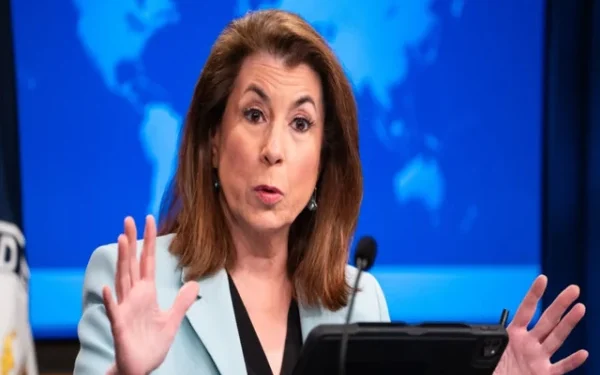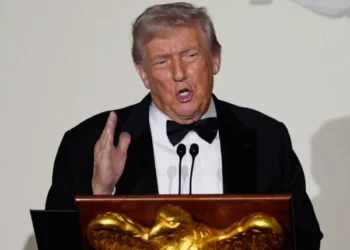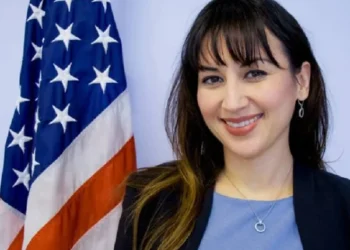Washington, D.C.: As tensions escalate between nuclear-armed neighbors Pakistan and India in the aftermath of the Pahalgam incident, the United States has taken swift diplomatic action. The U.S. State Department has confirmed that it is actively engaging with both nations in an effort to de-escalate the situation and promote regional stability.
During a press briefing held in Washington, State Department spokesperson Timmy Bruce stated that the U.S. is “closely monitoring” the rapidly developing situation and has called on both Islamabad and New Delhi to exercise restraint and remain peaceful.
Background: What Triggered the Latest Round of Tensions?
The latest flare-up in hostilities between Pakistan and India reportedly stems from the Pahalgam incident, which occurred in the Indian-administered region of Jammu and Kashmir. While the full details of the incident are still emerging, Indian officials have alleged that the attack, which resulted in multiple casualties, had links to groups based in Pakistan—a claim Islamabad has strongly denied.
The Indian government, as in previous instances, quickly pointed fingers at Pakistan without presenting verifiable evidence. Pakistan’s Foreign Office has categorically rejected these allegations and condemned the incident, calling for a thorough and impartial investigation.
This incident has revived fears of a diplomatic and potentially military standoff between the two South Asian rivals, both of whom possess nuclear weapons and a long history of border skirmishes, especially in the disputed Kashmir region.
US Monitoring Situation Closely and Urging Calm
According to Timmy Bruce, the U.S. administration under President Donald Trump has been in constant contact with both Islamabad and New Delhi. “We are watching the situation very carefully,” Bruce told reporters. “We have urged both sides to exercise restraint and to avoid any moves that could further inflame the situation.”
He emphasized that the U.S. remains committed to peace and security in South Asia, and reiterated Washington’s willingness to assist in any dialogue that may help reduce tensions.
US Secretary of State to Speak With Both Nations’ Leadership
In a significant development, U.S. Secretary of State Marco Rubio is scheduled to engage in direct conversations with the leadership of both countries. Timmy Bruce confirmed that these calls could take place “at any moment today,” depending on the availability of both parties.
Rubio, who has been vocal about prioritizing diplomatic efforts in conflict zones, is expected to urge leaders from both sides to seek a peaceful resolution and avoid aggressive rhetoric or actions.
This proactive move by the State Department underscores Washington’s concern that unchecked escalation between Pakistan and India could destabilize not just the two countries, but the broader South Asian region.
Global Leaders Mobilized to Prevent Escalation
In addition to direct U.S. intervention, Bruce stated that the Biden administration has reached out to other world leaders, urging them to engage with both Pakistan and India. “We have asked our global partners to encourage both sides to find a diplomatic solution to this crisis,” Bruce explained.
This multilateral diplomatic outreach reflects an understanding that the consequences of a potential conflict between Pakistan and India would be felt far beyond their borders. The region is already volatile due to overlapping geopolitical interests, and further instability could have wide-ranging implications—from trade disruptions to a refugee crisis.
Longstanding History of Pakistan-India Tensions
The relationship between Pakistan and India has been tense for decades, particularly due to the disputed status of Jammu and Kashmir, a region claimed by both nations in full but ruled in parts. The two countries have fought three wars since gaining independence from Britain in 1947, two of which were over Kashmir.
The latest Pahalgam incident is reminiscent of past flare-ups, such as the Pulwama attack in 2019, which led to air strikes by India on Balakot, and a retaliatory response from Pakistan. That incident brought the two nations perilously close to full-scale war, and only international mediation, including from the United States, helped avert disaster.
Pakistan’s Response to US Mediation
Islamabad has welcomed the United States’ call for peace, with officials reiterating that Pakistan remains committed to resolving disputes through dialogue and diplomacy. The Foreign Office of Pakistan issued a statement saying that the country “appreciates the international community’s efforts to de-escalate the situation” and hopes that “peace will prevail over propaganda.”
Pakistan has consistently sought third-party mediation, including from the United Nations and the U.S., to resolve the Kashmir conflict. However, India has largely resisted international involvement, maintaining that the issue is a bilateral one.
India’s Reaction to International Calls for Peace
On the other side, the Indian government has yet to make an official statement in response to the U.S. outreach, but sources within the Indian Ministry of External Affairs have suggested that New Delhi prefers a cautious approach. While India welcomes international support in counter-terrorism efforts, it remains sensitive to what it perceives as interference in its internal affairs.
India’s position remains hardened by its long-standing accusations against Pakistan of harboring groups that allegedly conduct attacks within Indian territory. Pakistan, in turn, has repeatedly called on India to provide concrete evidence and allow third-party investigations—something New Delhi has consistently refused.
The Role of the International Community
As the situation develops, analysts note that the role of the international community will be crucial in maintaining regional stability. Organizations such as the United Nations, the European Union, and regional forums like the South Asian Association for Regional Cooperation (SAARC) are expected to issue statements or engage in backdoor diplomacy.
Already, early reports suggest that China, a major ally of Pakistan and an important regional player, has called for “mutual restraint and peaceful resolution,” adding another layer to the complex diplomatic chessboard of South Asia.
Call for Dialogue and Understanding
Wrapping up his briefing, State Department spokesperson Timmy Bruce reaffirmed the U.S. position that dialogue is the only viable path forward. “We encourage both sides to prioritize understanding over confrontation. The goal is regional peace and the avoidance of unnecessary conflict,” he concluded.
This sentiment aligns with global expectations that both Pakistan and India must find ways to peacefully co-exist, even amid deep-rooted mistrust and unresolved territorial disputes.
Conclusion: A Critical Moment for South Asia
The latest mobilization by the United States reflects a deepening concern over the growing instability between Pakistan and India following the Pahalgam incident. With nuclear capabilities on both sides, even minor escalations carry the potential for catastrophic consequences—not just for South Asia, but for the entire world.
By stepping in early and engaging in proactive diplomacy, the United States is signaling the seriousness of the situation. Whether or not both nations heed the call for peace remains to be seen, but one thing is certain: the world is watching, and the stakes are high.

























